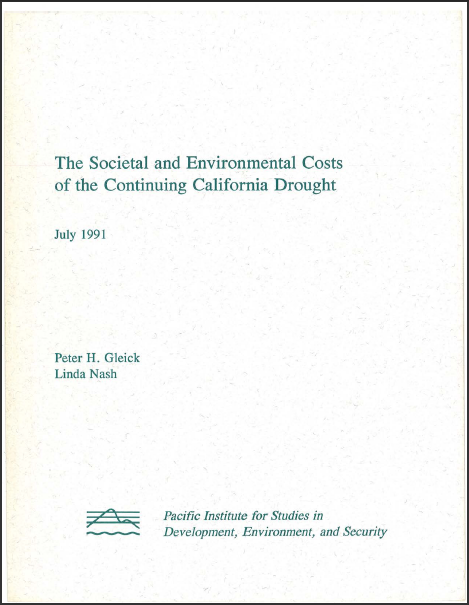The Societal and Environmental Cost of the Continuing California Drought

The Societal and Environmental Cost of the Continuing California Drought
We present here the information on the impacts and economic costs of the drought where they are available, for a wide variety of sectors. We also assess what the current drought tells us about California’s vulnerability to global climate change. We have avoided making an overall dollar estimate of the costs of the drought to California in part because such estimates can be misleading. They tend to focus attention on those impacts that can be easily quantified while undercounting those impacts that cannot be readily assessed in economic terms. Indeed, our study suggests that many of the most sever effects of the first four years of the drought have been in those sectors that are not adequately evaluated by economic measures, the State’s ecological resources: its fish, wildlife, forests, and natural ecosystems. Based on the information collected for this report, we believe that the greatest impacts are currently falling on the environment, and that, moreover, many of the ecological effects may be irreversible. In addition, California will see substantial economic costs, totaling roughly $3 billion, as a result of decreased hydroelectric potential. Limited portions of the agricultural sector are also bearing heavy costs, although the effect on California’s overall farm income will be relatively small. While urban areas have suffered shortages, they have been manageable in most cases and have not cause major economic dislocations. The additional rainfall that the State received in March of this year helped to avert much more serious impacts int eh municipal and industrial sectors, but only modestly improved the conditions of ecosystems and the water supply for agriculture. The drought is not over. With doubt, another dry year would result in much more severe situation than California has experienced thus far. Reservoir reserves have been drawn down to extremely low levels, some fisheries populations have been brought to the verge of extinction, if indeed they have not already been pushed over the edge, and ground-water reserves have been severely depleted in many agricultural regions.Overview

